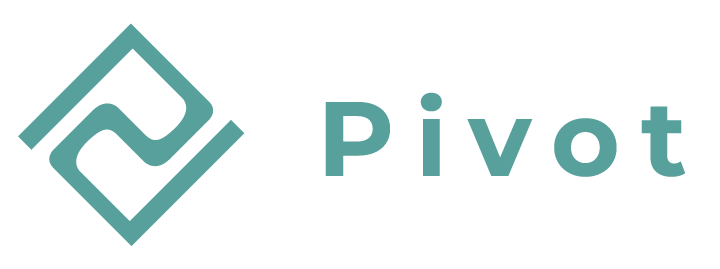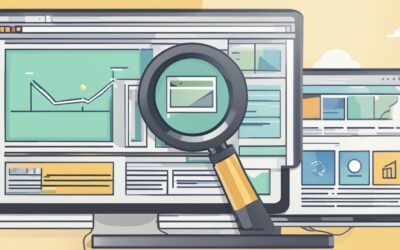Understanding the Role of a Web Designer
Web designers create the look and feel of websites. They blend creativity with technical skills, using design software and technology to bring innovative ideas to life.
Defining the Profession
A web designer focuses on making websites visually appealing and user-friendly. Their work involves planning page layouts, picking colours, and selecting fonts. They aim for a cohesive design that reflects a brand’s identity.
Web designers often start their career path with a bachelor’s degree or certification in web design. Gaining experience in UI/UX design specialization can be beneficial. They also stay updated with design software like Adobe Creative Suite to enhance their craft.
The Intersection of Creative and Technical Skills
Creativity is essential. You need to have a strong vision for design. You’ll work on aesthetics while balancing technical aspects like coding and using design software. Being proficient in HTML, CSS, and sometimes JavaScript helps implement designs effectively.
Your technical skills will grow with experience and education. A web design certificate can enhance your qualifications. Collaboration with developers and confidence in your skills can define successful projects. Embracing both creative and technical sides shapes a dynamic and fulfilling career as a web designer.
Essential Web Design Skills
Web design requires a blend of technical and creative skills. To succeed as a web designer, you need to master design tools and software, be proficient in coding languages like HTML, CSS, and JavaScript, and understand visual design principles.
Mastery of Design Tools and Software
Having a strong grasp of design tools is crucial. Familiarity with tools in the Adobe Creative Cloud, such as Adobe Photoshop and Illustrator, allows you to create and edit stunning graphics and layouts. Figma is another powerful tool for interactive prototyping and collaboration. If you prefer open-source software, consider exploring Inkscape for vector designs and the CorelDRAW Graphics Suite for comprehensive graphic design options. Developing skills in these programs enables you to translate creative ideas into tangible designs that meet client needs.
Proficiency in HTML, CSS, and JavaScript
Coding is at the core of web design. Understanding HTML is essential for building the structure of your web pages. It’s the backbone that organizes content, text, images, and links. CSS is used to style these elements, controlling fonts, colours, and layouts to enhance visual appeal. JavaScript adds interactivity, allowing animations and dynamic content changes without refreshing the page. These skills let you transform static designs into engaging, interactive websites. If you’re well-versed in these languages, you can effectively troubleshoot issues and optimize performance, providing users with a seamless experience.
Principles of Visual Design
Visual design includes understanding core principles like typography, colour schemes, and layout. Knowledge of these can make a site appealing and user-friendly. Typography involves selecting fonts that convey the brand’s message while ensuring readability. Colour theory helps you create visually harmonious designs that guide user interactions. The arrangement of text, images, and graphics on a page follows layout principles, ensuring balance and focus. Incorporating subtle animations can enhance engagement without overwhelming users. By mastering these principles, you create sites that are not only attractive but also intuitive to use, providing a positive experience for all visitors.
Web Design Processes
The web design process includes essential steps like creating site maps, developing responsive designs, and crafting prototypes. These steps ensure a functional and user-friendly website.
Creating Site Maps and Wireframes
Creating site maps and wireframes is a crucial first step in website design. A site map is like a blueprint for your website. It shows the structure and pages, helping you plan the layout.
Wireframes are simple sketches of pages. These highlight the placement of elements like text boxes, images, and navigation menus. They focus on user interface design, guiding you through organizing the site’s flow without getting caught up in colours or font choices.
Creating wireframes allows you to spot potential problems early. By focusing on structure before styling, you can ensure all necessary features are included. In this phase, collaboration with clients is key. Their feedback helps you refine the wireframes and prepare for the next steps. The final wireframes serve as a detailed guide for building the actual website.
Developing Responsive Design
Responsive design is about creating websites that look good on any device, whether it’s a smartphone or a desktop computer. It ensures a seamless user experience, regardless of screen size or device.
The layout should adapt fluidly. This involves using flexible grids and scalable images. Media queries are also used to apply different styles for various screen sizes.
Incorporating responsive design is not optional—it’s essential. When you develop responsive websites, you improve accessibility and user satisfaction. Testing is important. You should check sites on different devices to identify and fix any issues with the display or functionality.
Prototyping and Creating Mockups
Prototyping is an advanced step that gives a visual representation of the website. Using tools like Adobe XD or Sketch, you can build an interactive prototype. This shows the site’s layout and functionality without writing any code.
Mockups are more detailed visual representations. They include design elements like typography, colour schemes, and images. Mockups are crucial for gathering feedback on the visual design.
By creating prototypes and mockups, you can test user interactions and make design adjustments before full-scale development. This step allows you to refine the user interface and ensure the final product aligns with both client goals and user expectations. Including stakeholders in reviews at this stage enhances the overall quality and functionality of the website.
User Experience and Interface Design
Understanding both UX and UI principles is crucial for creating effective and engaging websites. By focusing on user needs and intuitive navigation, you ensure that your design caters to the users’ goals and enhances their interaction with the site.
Understanding UX and UI Principles
User Experience (UX) design focuses on how users interact with a website. It’s about ensuring that their journey is smooth and satisfying. A UX designer improves usability, accessibility, and pleasure in interaction.
Meanwhile, User Interface (UI) design is about how the site looks. It’s concerned with the visual elements like buttons, icons, and layout. A good UI designer ensures a visually appealing interface.
Both UX and UI must work together seamlessly for a site to be successful. While UX addresses functional layout, UI adds aesthetic appeal, creating an intuitive and cohesive design. Balancing these aspects involves strategic use of colour, typography, and responsive design to guide users effortlessly through the site.
User Research and Interaction Design
Conducting user research is vital in UX design. It helps you understand user needs, behaviours, and pain points.
Methods such as surveys, interviews, and usability testing provide insights into how users interact with your site. By analysing this data, you can create user personas and scenarios, which guide design decisions.
Interaction design focuses on how users engage with a website, emphasizing ease of use and navigation. By designing intuitive pathways and interactive elements, you enhance the user’s journey.
For example, clear call-to-action buttons and streamlined navigation menus improve accessibility. It’s crucial to iteratively test and refine these elements, ensuring the design remains user-centric and adapts to changing user expectations.
Collaboration and Communication
As a web designer, working well with others is key to successful projects. Clear communication ensures everyone is on the same page and helps in managing time effectively.
Working with Web Developers and Content Creators
When designing a website, teamwork with web developers and content creators is essential. Each team member has unique skills that contribute to the project. You need to communicate design ideas clearly to developers so they can build what you envision.
Communication skills are crucial, as misunderstandings can delay a project. Developers need to know about technical aspects, while content creators need to understand the layout for text and images.
Using tools like design mockups or wireframes can help everyone visualize the end goal. Keeping a constant flow of updates and feedback ensures that the project stays on track, meeting both aesthetic and functional requirements.
Effective Time Management and Organization
Managing time effectively is vital when working on web design projects. With various team members involved, scheduling meetings and deadlines can be a challenge.
You’ll need to organize your tasks by prioritizing what’s most important and setting clear timelines.
Creating a project schedule with milestones helps keep everyone on track. Tools like project management software can be useful for organizing tasks and deadlines.
Effective organization also means handling changes and feedback efficiently, ensuring that revisions do not cause unnecessary delays.
By keeping your tasks well-organized and maintaining strong communication skills, you can improve the efficiency of your team and the quality of the project outcomes.
Building and Showcasing a Web Designer Portfolio
Building and showcasing your web designer portfolio involves highlighting your technical skills and creative flair. This also showcases your ability to develop professional branding and design strategies. Focus on versatility and use a mix of digital tools to create a stunning portfolio website.
Showcasing Technical Competence and Creativity
Your portfolio should demonstrate both technical competence and creativity. Highlight your ability to use design programs like Photoshop or Sketch effectively.
Include examples of different types of projects, such as e-commerce sites or personal blogs, to show your range.
An effective way to display your technical skills is by including a case study from a completed project. This case study should detail your role, the tools you used, and the solutions you implemented. By doing this, you not only display what you can do, but also how you solve design problems.
Visuals play a significant role too. Use bold, clear images to make your portfolio website visually appealing. Consider an eye-catching homepage to grab attention.
Promoting Branding and Design Expertise
Your web designer portfolio should reflect your branding expertise. It’s crucial to maintain consistent design elements to emphasize your understanding of branding.
Make sure your logo, colour schemes, and typography align with your professional brand.
Highlight past work that involved branding, showcasing how you built or enhanced brand identities. Freelance web designers can benefit greatly from detailing projects where they improved a client’s brand visibility.
You can incorporate testimonials or feedback from previous clients to establish credibility. This not only showcases your design expertise but also positions you as a reliable professional in the field.
Remember to keep the design clean and make navigation easy, helping potential clients appreciate your branding skills.
Career Development in Web Design
Exploring the field of web design involves choosing between educational pathways and continuously expanding your skills through specializations. This section will guide you through the qualifications needed to develop a successful career in web design.
Educational Pathways and Continuing Education
Beginning your career in web design typically starts with a focus on education. A bachelor’s degree in fields like computer science or graphic design can provide a solid foundation. These programmes often cover essential web technologies and design principles. For those who prefer a shorter commitment, a web design certificate can be a quicker way to acquire technical skills.
Continuing education is vital in a fast-paced field like web design. Certifications such as the Google UX Design Professional Certificate not only improve your UX design skills but also help in staying up to date with industry trends.
Engaging with online courses and attending workshops can further strengthen your qualifications by broadening your knowledge of advanced design tools and methodologies.
Specializations and Expanding Skill Sets
As you progress, picking a specialization can set you apart in the web design industry. Specializations might include UI/UX design, front-end development, or interaction design. Each area requires unique skills and can cater to different aspects of a project.
For instance, a UI/UX design specialization might focus on enhancing user experience and ensuring ease of navigation.
Learning programming languages such as HTML, CSS, and JavaScript is crucial to expand your skill set. Familiarity with design software like Adobe Creative Suite is also important.
Investing time in these specializations not only boosts your technical capabilities but also enhances your appeal to potential employers, paving the path for career advancement.
Staying Ahead in Web Design
To excel in web design, it’s important to follow current trends and get comfortable with new tools and methods. This ensures your work is not only effective but also appealing to users.
Keeping Up with Web Development Trends
Web design trends change rapidly. Staying informed about the latest in web development is vital to keep your skills relevant. Focus on learning about micro-interactions. They can make websites more interactive and enjoyable. Mobile-first design is also crucial, as more users access websites on their phones. Understanding colour trends could greatly affect the mood and success of your designs.
Adapting to New Technologies and Best Practices
Web design requires adapting to new technologies and best practices. Learn about emerging programming languages and frameworks, such as JavaScript libraries like React or Angular. Familiarizing yourself with AI chatbots can also be beneficial, as they improve user interaction on websites. Using modern design tools is essential to produce innovative designs. Keeping an open mind to learning will help you stay ahead. Make sure you’re always experimenting with new methods as industry standards evolve.
Frequently Asked Questions
What are the daily responsibilities of a web designer?
As a web designer, you often plan and design the layout of websites. This involves creating visual elements, ensuring functional navigation, and maintaining site aesthetics. Regular tasks include updating content, solving coding issues, and testing the site’s performance and usability.
What qualifications are necessary for a career in web design?
You can become a web designer with either formal education or self-taught skills. Many hold degrees in fields like graphic design or computer programming. Practical experience with design software and an understanding of web technologies are key to this role.
How does one distinguish between the roles of a web designer and a web developer?
Web designers focus on the visual aspects and layout of a site. They handle design elements and user experience. In contrast, web developers are responsible for the technical side, such as coding and implementing web functionalities. Designers and developers usually collaborate closely.
What salary range can web designers expect in their profession?
Salaries for web designers can vary based on experience, location, and industry. Generally, they can expect a moderate to high salary range. Senior designers or those in large firms may earn more. It’s important to research current market trends for detailed figures.
Which environments do web designers typically find employment in?
Web designers often work in diverse environments, including tech companies, digital marketing agencies, or freelance roles. Team settings like corporate offices or creative agencies are common. Freelancers enjoy the flexibility of working remotely and usually have varied clients.
What are the essential skills required for a web designer?
Web designers need to be proficient in design software like Adobe Creative Suite. They should also have knowledge of HTML and CSS, and a good eye for aesthetics. Strong communication skills are crucial for collaborating with clients and teams. Adaptability and creativity are also important in a fast-changing digital landscape.




